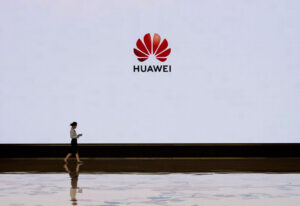Patent Pariah Or Patent Power?
Working to change public perception of the company while positioning it as a responsible innovator seems like a good investment of resources for Huawei.

(Photo by Kevin Frayer/Getty Images)
Perhaps no company has made more patent news over the last month or so than Huawei. Correction, perhaps no company’s patent strategy has been portrayed so poorly in the media over the last month than Huawei. Kicking things off was the public disclosure (strategic leak?) that Huawei was demanding patent license revenue from America’s leading wireless network, Verizon. The asking price? A Dr. Evil-esque demand of one billion dollars for a license to 250 Huawei patents that Verizon was allegedly infringing or would prospectively be infringing. Unsurprisingly, word got out that Verizon had rebuffed Huawei’s invitation, leading to speculation that Huawei would be forced to commence a costly and lengthy litigation campaign against Verizon if it ever hoped to see any part of that billion-dollar demand satisfied.
Compounding the insult was the news just after the Verizon debacle became public. Senator Marco Rubio, playing the Austin Powers to Huawei’s Dr. Evil, proposed legislation that would neuter Huawei’s ability to use its patents in U.S. infringement suits. Considering that patents are negative rights in the sense that all they provide the bearer legally is the right to exclude others, the good senator was basically proposing that Huawei’s patents be declared worthless by legislative fiat. This is on top, of course, on the current ban on Huawei’s products in the U.S., which has crippled the company’s plans in the world’s biggest commercial market.

Legal AI: 3 Steps Law Firms Should Take Now
To be fair, Rubio’s proposal to further punish Huawei drew criticism from many quarters, including from some unsympathetic to Huawei but aghast at the further proposed politicization of patent rights. Whether the opposition to Rubio’s proposal gave any comfort to Huawei is an open question. What is clear, however, is that just being targeted so publicly can’t have been received well on Huawei’s end. Especially since the current ban on product sales makes monetizing its large patent portfolio a bigger imperative so that the company can recoup its investments in the U.S. patent system. To that end, Huawei has been known to divest patents to non-practicing entities, some of which have already ended up in litigation against U.S. operating companies. But to really make a dent financially, Huawei would really need a big payout from its own assertion efforts — such as the one possible if it could put together a persistent and disciplined litigation campaign against Verizon.
In today’s climate, of course, no company — much less a Chinese one that has become the poster child for being a pawn in the U.S.-China trade war — would cavalierly announce itself as the next great patent troll. At the same time, there are definitely things that Huawei can be doing on the patent public relations front to help improve its image. For one, the company could consider some feel-good advertising on its rise to becoming the world’s largest telecom company, perhaps by highlighting its work in increasing access to connectivity in developing nations. Or it could illustrate how its massive investments in R&D have allowed it to build its 10,000+ U.S. patent portfolio.
Similarly, Huawei could follow the tried-and-true trial tactic of personalizing the company. On the patent front, that could mean spotlighting company inventors in advertisements, allowing them to become the face of the company’s innovation. Or it could talk about the challenges it has faced in the US market as a patent defendant, forced to defend the company’s products in a whole host of infringement suits brought against it over the years. The narrative being that Huawei respects intellectual property and is willing to invest in it, but also has done its part to combat patent trolls over the years as well. Finally, Huawei could look at dedicating some of its patents to the public domain, as we have seen numerous technology companies do over the past few years.
Working to change public perception of the company while positioning it as a responsible innovator seems like a good investment of resources for Huawei. Already, some softening of the U.S. government position to the company — and China in general — is starting to become apparent. The ban will probably not last forever and it is unlikely that Huawei’s patent portfolio in the U.S. will be erased overnight. Which means that the Huawei patent story is likely to continue for years to come. The more Huawei invests in forwarding a positive narrative around its patent strategy the better. Otherwise, what should be considered a patent power may doom itself to becoming a patent pariah. But there is still time for Huawei to avoid that fate. One thing that is for certain is that Huawei’s every step will be scrutinized, at least until some other company steals the bogeyman spotlight in patent-driven news. Power or pariah? The outcome will be dictated by Huawei’s decisions in the near future…
Sponsored

Navigating Financial Success by Avoiding Common Pitfalls and Maximizing Firm Performance

The Business Case For AI At Your Law Firm


Early Adopters Of Legal AI Gaining Competitive Edge In Marketplace

Navigating Financial Success by Avoiding Common Pitfalls and Maximizing Firm Performance
Please feel free to send comments or questions to me at gkroub@kskiplaw.com or via Twitter: @gkroub. Any topic suggestions or thoughts are most welcome.
Gaston Kroub lives in Brooklyn and is a founding partner of Kroub, Silbersher & Kolmykov PLLC, an intellectual property litigation boutique, and Markman Advisors LLC, a leading consultancy on patent issues for the investment community. Gaston’s practice focuses on intellectual property litigation and related counseling, with a strong focus on patent matters. You can reach him at gkroub@kskiplaw.com or follow him on Twitter: @gkroub.
Sponsored

Is The Future Of Law Distributed? Lessons From The Tech Adoption Curve








